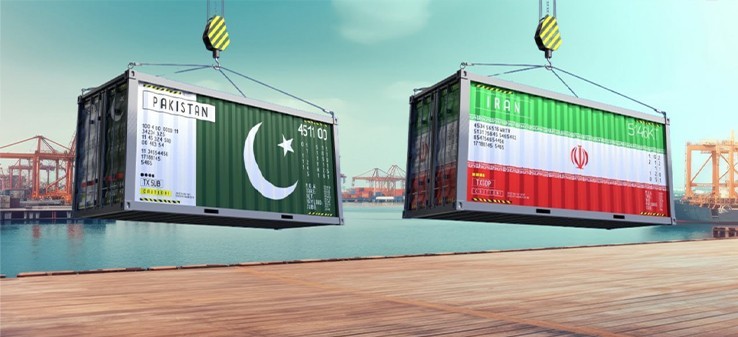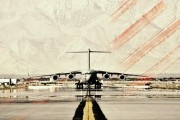The ITI Railway Corridor and the Iran–Pakistan FTA
The ITI Railway Corridor and the Iran–Pakistan FTA: Two Wings of Regional Trade Development
The ongoing Free Trade Agreement (FTA) between Iran and Pakistan and the revival of the Istanbul–Tehran–Islamabad (ITI) railway corridor are two interconnected developments that reflect broader ambitions for economic and transit integration across Eurasia. These two initiatives, which—if implemented simultaneously—will generate significant synergistic effects, can not only transform the regional trade and transportation map, but also have the potential to connect Europe to China through Iran and turn Iran into the epicenter of Eurasian developments. This article analyzes various dimensions of these initiatives and their combined impact on regional trade and economic dynamics.
🖊️ Shahram Pirani
⏱️8 Minutes Reading
⏱️8 Minutes Reading
Introduction
In the current geopolitical environment, where the need for diverse and resilient trade routes is felt more than ever, regional countries are redefining their economic cooperation. Among these developments, the ongoing Free Trade Agreement (FTA) between Iran and Pakistan and the revival of the Istanbul–Tehran–Islamabad (ITI) railway corridor represent two interconnected events signaling broader aspirations for economic and transit integration across Eurasia. If implemented simultaneously, these initiatives could generate significant synergies, change the regional trade and transport landscape, connect Europe to China via Iran, and position Iran at the heart of Eurasian developments. This article explores various aspects of these two initiatives and their combined effects on regional trade and economic activity.
The Iran–Pakistan Free Trade Agreement: A Platform for Eliminating Trade Barriers
The FTA between Iran and Pakistan, most of which has reportedly been finalized, serves as the cornerstone of the future economic relationship between the two countries. The primary objective of this agreement is to remove or significantly reduce customs tariffs on a wide range of goods, thereby facilitating and lowering the costs of trade—currently conducted mostly via land routes.
It is noteworthy that the economies of Iran and Pakistan are complementary in many areas. Iran possesses vast energy reserves (oil and gas), petrochemical industries, and raw materials, while Pakistan has a strong agricultural economy (rice, fruit, textiles) and an abundant young labor force. An FTA can ease the flow of these complementary goods by eliminating or reducing tariff barriers. Iranian gas exports to Pakistan—long hindered by political and financial obstacles—may materialize within the framework of this agreement.
Both countries have enthusiastically welcomed the finalization of this agreement and have set an ambitious goal to increase bilateral trade volume from the current $2 billion to $10 billion by 2028. Achieving this target requires major improvements to border infrastructure, as estimates suggest that this level of trade would require the daily movement of 1,800 to 2,000 trucks across shared land borders. Fortunately, the two countries have agreed to expand the Mirjaveh and Rimdan border terminals and equip other crossings, laying the physical foundation needed to operationalize these projects and accelerate trade flows.
The ITI Railway Corridor: A New Lifeline for Connectivity
The ITI railway route (Istanbul–Tehran–Islamabad), stretching approximately 6,540 km, is the most ambitious connectivity project among Iran, Turkey, and Pakistan. this route, which was operational on a trial basis about a decade ago, will officially resume its operation in December 2025 following agreements among Iranian, Pakistani, and Turkish authorities. Its most important outcome is a dramatic reduction in shipping time between Pakistan and Turkey.
Currently, transporting goods by sea from Karachi to Istanbul takes around 45 days. The new railway route will reduce this to 12–14 days. This reduction in time is not only cost savings, but also provides access to fast-paced and time-sensitive European markets via Turkey. For Iranian and Pakistani producers, this represents a major supply-chain development.
The strategic significance of the ITI corridor becomes even greater when placed alongside broader initiatives. The corridor is directly linked to the China–Pakistan Economic Corridor (CPEC), enabling cargo flow from Gwadar port in Pakistan northward by road and rail, and then westward via this rail corridor. It is also integrated with China’s Belt and Road Initiative, solidifying Iran as a vital “transit bridge” inside this mega-project. This link will elevate the ITI route from a regional line into a key linkage in Eurasia’s transport network.
Iran lies at the heart of this geography. Railways from the east (Pakistan) and northeast (Turkmenistan and Central Asia) converge in Iran and connect westward to Europe through Turkey. Iran’s strategic Chabahar Port can also serve as a central node in this network, attracting goods from India and other Indian Ocean states and routing them toward Eurasia—providing Iran with significant economic and geopolitical leverage.
According to the joint trilateral meeting held in Islamabad on 8–9 September 2025, at least one freight train per month will operate on this route. The meeting also agreed on uniform and competitive freight tariffs, optimal scheduling, and the removal of customs barriers.
Synergistic Effects of these Initiatives
The real impact of these initiatives will emerge when they operate simultaneously. The FTA will eliminate tariff barriers and smooth bilateral trade flows between Iran and Pakistan, while the ITI corridor will provide a fast and cost-efficient route to ease the logistical burden of this massive trade flow. On the other hand, the success of these projects will create countless economic opportunities. these projects can develop underprivileged border provinces in both countries, create substantial employment, and enhance the competitiveness of the region's goods in global markets by lowering transportation costs.
Importantly, the corridor benefits more than the three core countries; it connects Pakistan through Iran to Turkey and European markets, while enabling Turkey to access markets in Pakistan, India, and East Asia via Iran. This integrated network can also attract major economic players like China. As Iran’s Minister of Roads and Urban Development noted, the corridor capacities of Iran and Pakistan offer ideal opportunities for connecting China to Europe. Thus, the ITI corridor is poised to become part of China’s broader New Silk Road initiative.
Challenges Ahead
Despite the positive political convergence among the three countries, the path toward full implementation of these projects is not entirely smooth, and challenges lie ahead, some of which are outlined below.
• Infrastructure Challenges: The existing railway lines, particularly along the Quetta–Taftan route, are in urgent need of modernization and upgrades. The full implementation and enhancement of current railway infrastructure, along with the construction of new lines, requires substantial investment. Attracting such investment amid regional instability and under sanctions poses a significant challenge.
• Political Stability and Security: The continuity of cooperation and the successful implementation of these projects require the stabilization of relations as well as the preservation of political will in all three countries. Ensuring the security of investments in major infrastructure initiatives is also essential for long-term success. Border areas between Iran and Pakistan, particularly in Balochistan, occasionally experience insecurity, which could affect the safety of railway lines and investment flows.
• Geopolitical Pressures: Iran is located in a sensitive region and is subject to Western sanctions. Pakistan and Turkey, fully aware of these circumstances, are pursuing this major cooperation with Iran, and it is reasonable to assume that they have anticipated potential political consequences and pressures from Western actors. In other words, establishing diplomatic balance by these countries— to advance the projects without provoking further external tension—will require sophisticated diplomatic skills.
• Technical and Administrative Coordination: The three countries operate with different railway standards (track gauge and signaling systems) and distinct customs regulations. Harmonizing and standardizing these systems demands a strong political will and a technically complex work.
Conclusion
The combination of the Iran–Pakistan Free Trade Agreement with the ITI Railway Corridor can be considered a win-win strategy for all involved parties. This joint initiative is not merely a transportation route; it is an economic artery capable of bringing sustainable growth and development to the region. The successful implementation of these two undertakings could result in profound developments for all participating countries.
From a broader perspective, such cooperation could solidify Iran’s position as the central corridor connecting East and West, while also mitigating the detrimental effects of sanctions imposed on the country and enhancing its geopolitical weight in regional dynamics. Furthermore, these projects will facilitate Pakistan’s access to Central Asian and European markets and secure the energy flows it needs. They will also strengthen Turkey’s role as a bridge between Europe and Asia and increase its access to East Asian markets.
Successful implementation of these large-scale initiatives requires not only strong political will but also close cooperation with the private sector, investment in technology, and integrated logistics management. If these challenges are effectively addressed, there is no doubt that a new commercial and economic corridor will emerge on the world map—one that evokes the grandeur of the ancient Silk Road in the modern era.
Shahram Pirani holds a PhD in Political Science and is a researcher of international affairs.
In the current geopolitical environment, where the need for diverse and resilient trade routes is felt more than ever, regional countries are redefining their economic cooperation. Among these developments, the ongoing Free Trade Agreement (FTA) between Iran and Pakistan and the revival of the Istanbul–Tehran–Islamabad (ITI) railway corridor represent two interconnected events signaling broader aspirations for economic and transit integration across Eurasia. If implemented simultaneously, these initiatives could generate significant synergies, change the regional trade and transport landscape, connect Europe to China via Iran, and position Iran at the heart of Eurasian developments. This article explores various aspects of these two initiatives and their combined effects on regional trade and economic activity.
The Iran–Pakistan Free Trade Agreement: A Platform for Eliminating Trade Barriers
The FTA between Iran and Pakistan, most of which has reportedly been finalized, serves as the cornerstone of the future economic relationship between the two countries. The primary objective of this agreement is to remove or significantly reduce customs tariffs on a wide range of goods, thereby facilitating and lowering the costs of trade—currently conducted mostly via land routes.
It is noteworthy that the economies of Iran and Pakistan are complementary in many areas. Iran possesses vast energy reserves (oil and gas), petrochemical industries, and raw materials, while Pakistan has a strong agricultural economy (rice, fruit, textiles) and an abundant young labor force. An FTA can ease the flow of these complementary goods by eliminating or reducing tariff barriers. Iranian gas exports to Pakistan—long hindered by political and financial obstacles—may materialize within the framework of this agreement.
Both countries have enthusiastically welcomed the finalization of this agreement and have set an ambitious goal to increase bilateral trade volume from the current $2 billion to $10 billion by 2028. Achieving this target requires major improvements to border infrastructure, as estimates suggest that this level of trade would require the daily movement of 1,800 to 2,000 trucks across shared land borders. Fortunately, the two countries have agreed to expand the Mirjaveh and Rimdan border terminals and equip other crossings, laying the physical foundation needed to operationalize these projects and accelerate trade flows.
The ITI Railway Corridor: A New Lifeline for Connectivity
The ITI railway route (Istanbul–Tehran–Islamabad), stretching approximately 6,540 km, is the most ambitious connectivity project among Iran, Turkey, and Pakistan. this route, which was operational on a trial basis about a decade ago, will officially resume its operation in December 2025 following agreements among Iranian, Pakistani, and Turkish authorities. Its most important outcome is a dramatic reduction in shipping time between Pakistan and Turkey.
Currently, transporting goods by sea from Karachi to Istanbul takes around 45 days. The new railway route will reduce this to 12–14 days. This reduction in time is not only cost savings, but also provides access to fast-paced and time-sensitive European markets via Turkey. For Iranian and Pakistani producers, this represents a major supply-chain development.
The strategic significance of the ITI corridor becomes even greater when placed alongside broader initiatives. The corridor is directly linked to the China–Pakistan Economic Corridor (CPEC), enabling cargo flow from Gwadar port in Pakistan northward by road and rail, and then westward via this rail corridor. It is also integrated with China’s Belt and Road Initiative, solidifying Iran as a vital “transit bridge” inside this mega-project. This link will elevate the ITI route from a regional line into a key linkage in Eurasia’s transport network.
Iran lies at the heart of this geography. Railways from the east (Pakistan) and northeast (Turkmenistan and Central Asia) converge in Iran and connect westward to Europe through Turkey. Iran’s strategic Chabahar Port can also serve as a central node in this network, attracting goods from India and other Indian Ocean states and routing them toward Eurasia—providing Iran with significant economic and geopolitical leverage.
According to the joint trilateral meeting held in Islamabad on 8–9 September 2025, at least one freight train per month will operate on this route. The meeting also agreed on uniform and competitive freight tariffs, optimal scheduling, and the removal of customs barriers.
Synergistic Effects of these Initiatives
The real impact of these initiatives will emerge when they operate simultaneously. The FTA will eliminate tariff barriers and smooth bilateral trade flows between Iran and Pakistan, while the ITI corridor will provide a fast and cost-efficient route to ease the logistical burden of this massive trade flow. On the other hand, the success of these projects will create countless economic opportunities. these projects can develop underprivileged border provinces in both countries, create substantial employment, and enhance the competitiveness of the region's goods in global markets by lowering transportation costs.
Importantly, the corridor benefits more than the three core countries; it connects Pakistan through Iran to Turkey and European markets, while enabling Turkey to access markets in Pakistan, India, and East Asia via Iran. This integrated network can also attract major economic players like China. As Iran’s Minister of Roads and Urban Development noted, the corridor capacities of Iran and Pakistan offer ideal opportunities for connecting China to Europe. Thus, the ITI corridor is poised to become part of China’s broader New Silk Road initiative.
Challenges Ahead
Despite the positive political convergence among the three countries, the path toward full implementation of these projects is not entirely smooth, and challenges lie ahead, some of which are outlined below.
• Infrastructure Challenges: The existing railway lines, particularly along the Quetta–Taftan route, are in urgent need of modernization and upgrades. The full implementation and enhancement of current railway infrastructure, along with the construction of new lines, requires substantial investment. Attracting such investment amid regional instability and under sanctions poses a significant challenge.
• Political Stability and Security: The continuity of cooperation and the successful implementation of these projects require the stabilization of relations as well as the preservation of political will in all three countries. Ensuring the security of investments in major infrastructure initiatives is also essential for long-term success. Border areas between Iran and Pakistan, particularly in Balochistan, occasionally experience insecurity, which could affect the safety of railway lines and investment flows.
• Geopolitical Pressures: Iran is located in a sensitive region and is subject to Western sanctions. Pakistan and Turkey, fully aware of these circumstances, are pursuing this major cooperation with Iran, and it is reasonable to assume that they have anticipated potential political consequences and pressures from Western actors. In other words, establishing diplomatic balance by these countries— to advance the projects without provoking further external tension—will require sophisticated diplomatic skills.
• Technical and Administrative Coordination: The three countries operate with different railway standards (track gauge and signaling systems) and distinct customs regulations. Harmonizing and standardizing these systems demands a strong political will and a technically complex work.
Conclusion
The combination of the Iran–Pakistan Free Trade Agreement with the ITI Railway Corridor can be considered a win-win strategy for all involved parties. This joint initiative is not merely a transportation route; it is an economic artery capable of bringing sustainable growth and development to the region. The successful implementation of these two undertakings could result in profound developments for all participating countries.
From a broader perspective, such cooperation could solidify Iran’s position as the central corridor connecting East and West, while also mitigating the detrimental effects of sanctions imposed on the country and enhancing its geopolitical weight in regional dynamics. Furthermore, these projects will facilitate Pakistan’s access to Central Asian and European markets and secure the energy flows it needs. They will also strengthen Turkey’s role as a bridge between Europe and Asia and increase its access to East Asian markets.
Successful implementation of these large-scale initiatives requires not only strong political will but also close cooperation with the private sector, investment in technology, and integrated logistics management. If these challenges are effectively addressed, there is no doubt that a new commercial and economic corridor will emerge on the world map—one that evokes the grandeur of the ancient Silk Road in the modern era.
News code:4164















